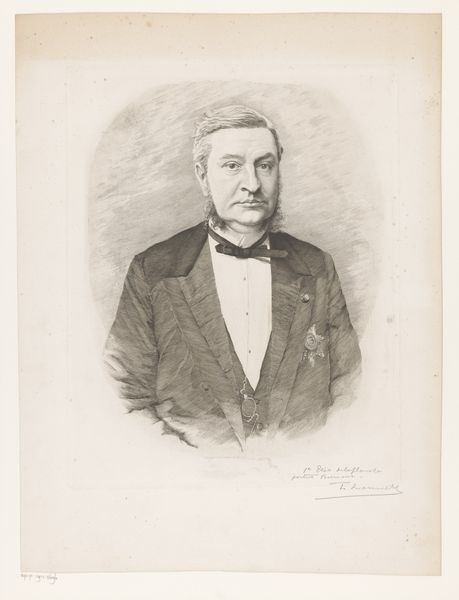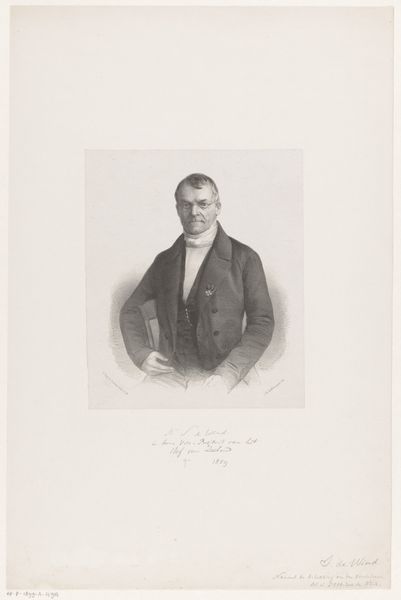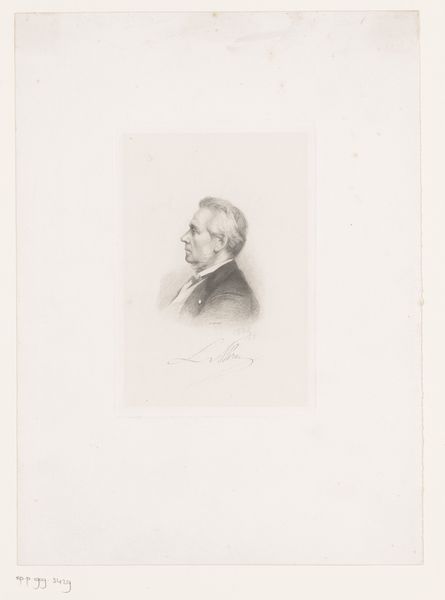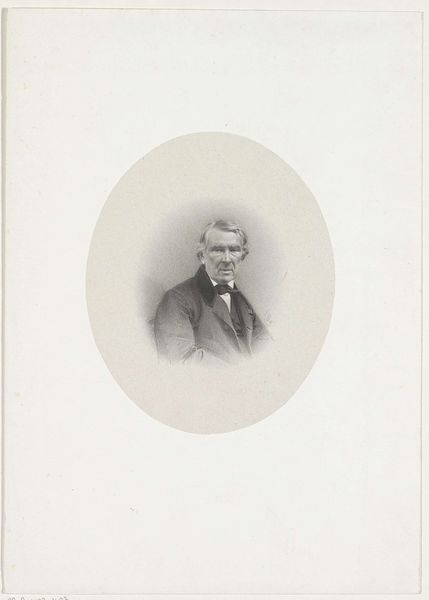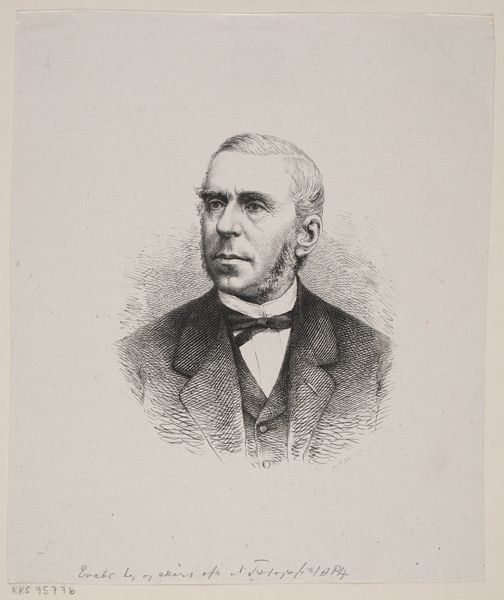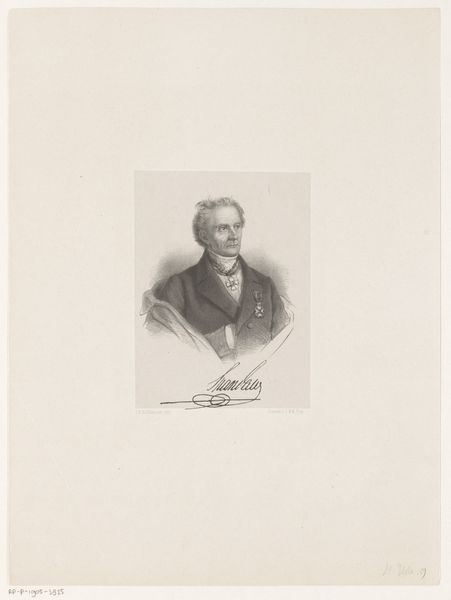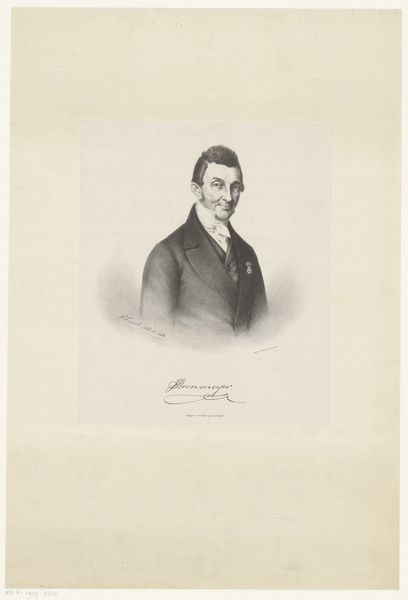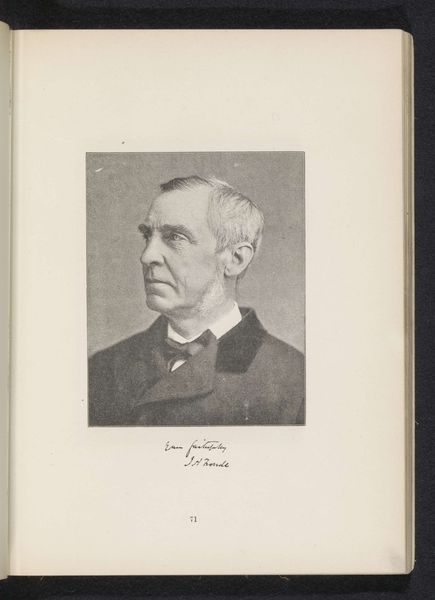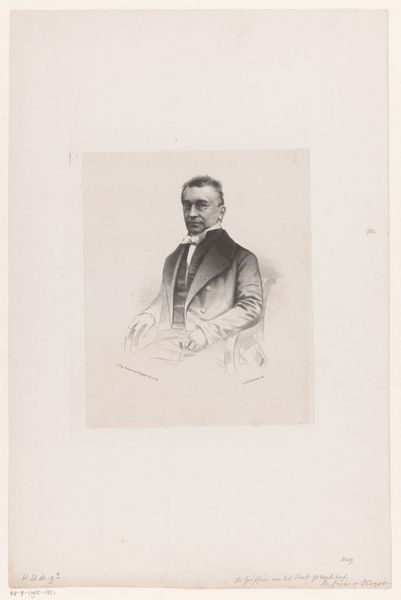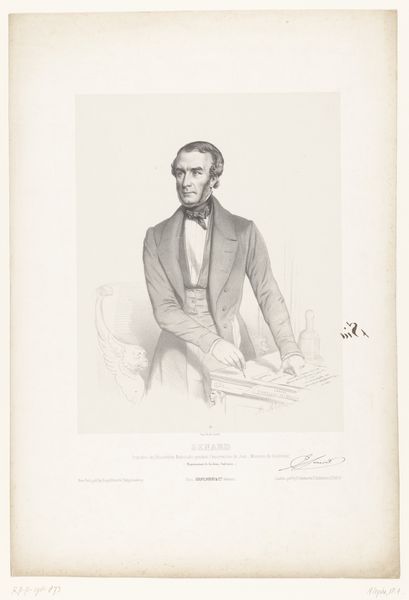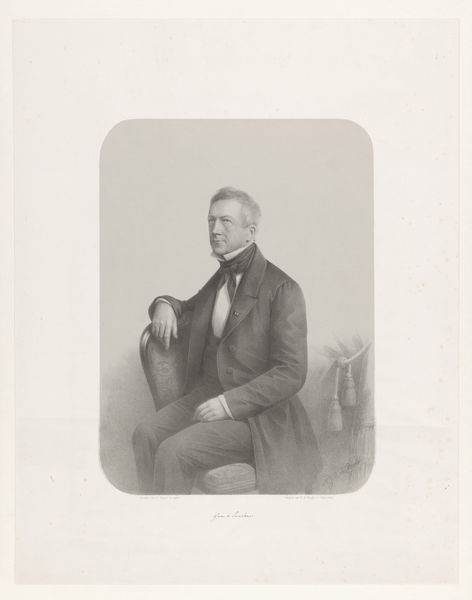
Dimensions: height 350 mm, width 270 mm
Copyright: Rijks Museum: Open Domain
This is Jan Mesker’s portrait of Andreas Schelfhout, made in the 19th century using etching and possibly other engraving techniques. The printmaking process is essential to understanding this work. It would have begun with Mesker carefully rendering Schelfhout’s image, using fine lines to create tonal variation and texture. The image was then transferred to a metal plate, likely copper or zinc. This plate would be painstakingly worked, using acid to bite the image into the metal, or a burin to directly engrave it. The plate is then inked and printed, transferring the image to paper. This method of reproduction meant that portraits like this could be widely circulated, contributing to Schelfhout’s fame as a landscape painter. But it also reminds us of the labour involved in image-making before photography became widespread: the skilled hands required to create these intricate likenesses. So next time you see a print, remember the craft and effort embedded within it. It is far more than just a picture.
Comments
No comments
Be the first to comment and join the conversation on the ultimate creative platform.
